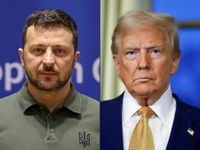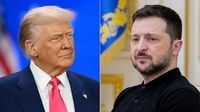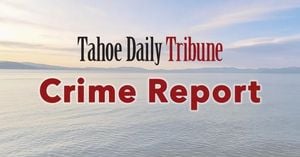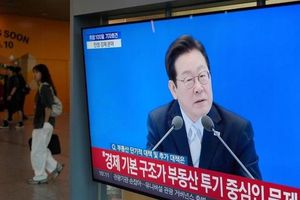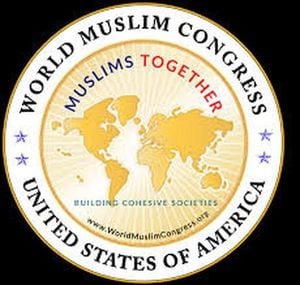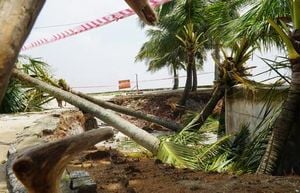On August 18, 2025, Washington, D.C. became the epicenter of high-stakes diplomacy as President Donald Trump hosted Ukrainian President Volodymyr Zelenskyy and a formidable lineup of European leaders at the White House. The summit, which drew heads of state from across the Atlantic, was billed as an urgent attempt to broker a lasting peace in the fourth year of Russia’s war against Ukraine—a conflict that has left thousands dead and millions displaced since Moscow’s full-scale invasion in February 2022.
This gathering followed a dramatic shift in U.S. policy. Just three days earlier, Trump met Russian President Vladimir Putin in Anchorage, Alaska, for nearly three hours. While Trump had initially pressed for an immediate ceasefire, he emerged from the Alaska talks with a new message: Kyiv should accept territorial concessions to secure peace, and Ukraine’s aspirations to reclaim Crimea or join NATO were now off the table. "President Zelenskyy of Ukraine can end the war with Russia almost immediately, if he wants to, or he can continue to fight," Trump posted on social media the night before the summit, reiterating, "NO GOING INTO NATO BY UKRAINE. Some things never change!!!" According to ABC News, Trump was explicit—Ukraine would not regain Crimea, which Russia annexed in 2014, and there would be no NATO membership for Kyiv.
The White House was abuzz as Zelenskyy arrived Sunday night, voicing cautious optimism. In a post on X (formerly Twitter), Zelenskyy wrote, "We all share a strong desire to end this war quickly and reliably. And peace must be lasting." He invoked the memory of the 1994 Budapest Memorandum—an agreement that traded Ukraine’s nuclear arsenal for "security assurances" from Russia, the U.S., and the UK, but which failed to prevent Moscow’s later aggression. "Ukrainians are fighting for their land, for their independence," Zelenskyy declared. "Russia must end this war, which it itself started. And I hope that our joint strength with America, with our European friends, will force Russia into a real peace."
The summit’s guest list read like a who’s who of European leadership: European Commission President Ursula von der Leyen, German Chancellor Friedrich Merz, UK Prime Minister Keir Starmer, NATO Secretary-General Mark Rutte, French President Emmanuel Macron, Italian Prime Minister Giorgia Meloni, and Finnish President Alexander Stubb all made the trip. According to CNBC, these leaders began arriving at the White House around noon, signaling the gravity of the moment for both Europe and the transatlantic alliance.
Vice President JD Vance—who had previously clashed with Zelenskyy in a tense Oval Office meeting in February—joined the bilateral talks. The day’s agenda was packed: Trump and Zelenskyy met privately, followed by a group photo and a multilateral session with the assembled European leaders. The stakes could hardly have been higher, as the world watched to see whether a new peace framework would emerge—or if the war’s front lines would simply harden further.
European officials arrived in Washington with a unified message. Ahead of the summit, French President Emmanuel Macron told reporters, "If we are weak today with Russia, we prepare the wars of tomorrow." Macron and his counterparts insisted that any peace must be preceded by a ceasefire, robust security guarantees for Ukraine, and that only Kyiv could decide on territorial concessions. The question of Western security assurances took center stage. As U.S. special envoy Steve Witkoff told CNN, the administration was exploring "game-changing" guarantees, potentially including an "Article 5-like protection"—a nod to NATO’s collective defense clause, but outside the formal alliance framework.
This approach, according to CBS News, aimed to reassure Ukraine that future Russian aggression would be deterred, even as Trump made clear that NATO membership was not on offer. Witkoff confirmed that a possible land swap was on the table for discussion, with the hope of reaching a permanent end to hostilities "very, very quickly. Quicker than a ceasefire." The urgency was palpable: "We are intent on trying to hammer out a peace deal that ends the fighting permanently," Witkoff said.
But back in Ukraine, the mood was far from conciliatory. The country’s constitution requires any changes to national borders to be approved by a nationwide referendum, and Kyiv’s ambitions to join NATO and the European Union are enshrined in law. Oleksandr Merezhko, chair of the Ukrainian parliament’s foreign affairs committee, told ABC News, "Territorial concessions are impossible. Under the present circumstances, we need a ceasefire and security guarantees to prevent Putin from violating the ceasefire." He added, "Putin is afraid of only one thing—NATO. That’s why it’s the most reliable and effective security guarantee for us."
Meanwhile, the violence showed no sign of abating. Overnight into August 18, Russian forces launched a massive barrage: 140 drones and four missiles targeted Ukrainian cities, according to Ukraine’s air force, which claimed to have shot down or suppressed 88 drones. The attacks struck 25 locations across Donetsk, Kharkiv, Sumy, Dnipropetrovsk, Odesa, and Kyiv regions. In Kharkiv, a Russian drone slammed into an apartment complex, killing at least seven people, including a child. Zaporizhzhia governor Ivan Fedorov reported three dead and 23 injured from missile strikes in the southern region. Russian state media, meanwhile, said their forces had downed at least 24 Ukrainian drones and reported a Ukrainian drone attack in Donetsk that killed a 62-year-old woman.
Amid the carnage, Ukraine’s Minister of Foreign Affairs, Andrii Sybiha, lamented on social media, "Despite all of the diplomacy and peace efforts, Russia continues to kill civilians. Russia is a murderous war machine that Ukraine is holding back. And it must be stopped through transatlantic unity and pressure. Moscow must stop the killing in order to advance diplomacy."
The markets seemed to mirror the uncertainty. As CNBC reported, all three major U.S. stock indexes opened slightly lower on August 18, following two weeks of gains—perhaps a sign that investors were bracing for the unpredictable outcomes of the day’s diplomatic gamble.
As world leaders huddled behind closed doors, the path to peace looked daunting. The U.S. and its allies were caught between the desire to end a grinding war and the need to ensure that any agreement did not reward aggression or undermine international law. Most of the world still considers Russia’s annexation of Crimea illegal, and European leaders were adamant that only Ukraine could decide its fate. Yet the pressure from Washington for Kyiv to make concessions was unmistakable.
For now, Ukraine’s future—and the security architecture of Europe—hangs in the balance. As the day’s meetings continue, the world waits to see whether this summit will mark a turning point, or simply another chapter in a war that has already rewritten the map of the continent.
